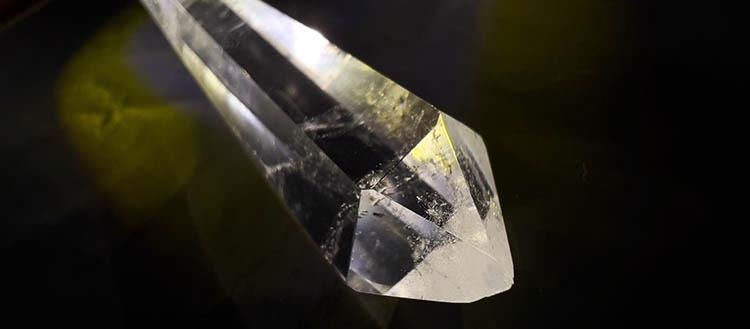Reviewed by Alex SmithApr 22 2022
Crystallization, the process that occurs at the intersection of chemistry and physics, is present in both industry and nature. It is responsible for the creation of snowflakes as well as certain pharmaceutical active substances.
 The scientists used lasers to reveal the molecular structure at work during nucleation, but also to induce nucleation and observe its spectral fingerprint. Image Credit: © Oscar Urquidi.
The scientists used lasers to reveal the molecular structure at work during nucleation, but also to induce nucleation and observe its spectral fingerprint. Image Credit: © Oscar Urquidi.
For a substance to experience the phenomena, it must first go through a stage known as nucleation, in which the molecules organize themselves and establish the ideal conditions for crystal formation.
While it has been challenging to witness these pre-nucleation activities, a research group from the University of Geneva (UNIGE) has now shown this crucial phase.
Scientists have excelled in spectroscopically seeing this process in real-time and on a micrometric scale, providing the possibility for the development of safer and better active substances. The Proceedings of the National Academy of Sciences (PNAS) published these findings.
Crystallization is a chemical and physical technique that is utilized in a variety of industries, including pharmaceuticals and food processing. This is utilized to create crystals out of a gaseous or liquid substance. These phenomena, however, are not limited to industry — they can also be found in nature, such as in snowflakes, coral and kidney stones.
Crystals must initially go through a vital stage called nucleation before they can form. The molecules start to organize themselves to form “nuclei,” stable clusters of molecules, which contributes to the genesis and expansion of crystal during this first stage. This procedure is stochastically occurring, which means it is impossible to anticipate when and where a nucleus will form.
Until now, scientists have been struggling to visualize this first stage at the molecular level. The microscopic picture of crystal nucleation has been under intense debate. Recent studies suggest that molecules seem to form some disordered organization before the formation of ‘nuclei’. Then how does the crystalline order emerge from them? That is a big question!
Takuji Adachi, Assistant Professor, Physical Chemistry, Faculty of Science, University of Geneva
Capturing One Crystal Nucleation Event at a Time
Takuji Adachi and his colleagues, with the help of two researchers from McGill University’s Department of Chemistry (Nathalie LeMessurier and Lena Simine), have succeeded in witnessing the nucleation activity of an individual crystal at the micrometric level using optical spectroscopy.
We have succeeded in demonstrating and visualizing the organization and formation of molecular aggregates that precede crystallization.
Johanna Brazard, Study Co-First Author and Researcher, Physical Chemistry, University Of Geneva
The researchers used a combination of Raman microspectroscopy and optical trapping to observe these phenomena. Raman microspectroscopy is a technique that uses the interaction of light with matter to collect data about its composition.
Oscar Urquidi, a doctoral student in the Department of Physical Chemistry and co-first author of this research explains, “We used lasers to highlight the molecular structure during the nucleation but also to induce the nucleation phenomenon and thus be able to observe it and record its spectral imprint.”
Glycine, an amino acid that is an important foundation of life, dissolved in water was selected as the model substance for these investigations.
Our work has revealed a stage of crystallization that was previously invisible. Visualizing more precisely and better understanding what is happening at the molecular level is very useful for directing certain manipulations more effectively.
Takuji Adachi, Assistant Professor, Physical Chemistry, Faculty of Science, University of Geneva
This study, in particular, could make it simpler to achieve purer and more persistent crystal structures for specific compounds utilized in the development of a wide range of medications and materials.
Journal Reference:
Urquidi, O., et al. (2022) In situ optical spectroscopy of crystallization: One crystal nucleation at a time. Proceedings of the National Academy of Sciences. doi.org/10.1073/pnas.2122990119.